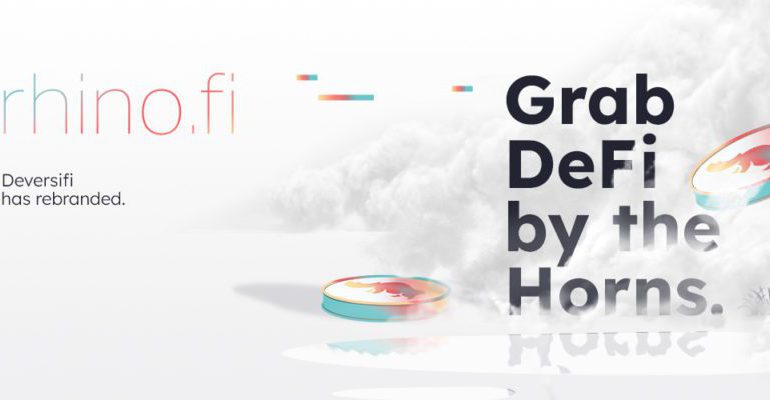The Rhino.Fi Team Examines Defi’s Significance In The Next Years.

Since Satoshi Nakamoto released the whitepaper they created on Bitcoin in 2008; there has been a tremendous amount of innovation in a field that has developed at a dizzying pace. The rhino. Fi platform is a multi-chain, self-custodial, decentralized exchange hosted on layer2. Its objective is to provide a gateway that will enable customers access to DeFi on any chain using a single wallet, irrespective of the chain. When working in the bitcoin industry, it might be challenging to avoid the temptation to monitor prices constantly. It is reasonable if you become more pessimistic as the bear market tightens its grip.
Layer 1 (L1) blockchains include Ethereum and Solana. These blockchains are the basis upon which they may build other structures and applications. The final statuses of transactions are recorded in their related L1 ledger accounts.
Due to the increasing popularity of the Ethereum Layer 1 blockchain, developed the Ethereum Layer 2 blockchain. L2s, also known as Layer 2, is erected on top of L1s. Ethereum L2s are represented by the cryptocurrencies Optimism, Arbitrum, and Starkware. Due to the high demand, gas prices rose, the network got clogged, and transactions were delayed.
L2 solutions execute transactions independently of L1 and then upload the outcomes of these operations in bulk to L1 so that the whole community may see them. This strategy enables the scalability of Ethereum by alleviating L1 of its significant transaction load. This is achieved without compromising the security offered by the L1 blockchain. The deployment of L2 scaling techniques for Ethereum may result in a 100-fold decrease in gas costs.
Also, read Snowden’s Top 3 Recommendations On Web3’s Enhanced Openness.
Rhino. fi (formerly known as DeversiFi) is a decentralized application (DApp) based on Ethereum L2 that enables users to acquire, trade, and invest tokens without the delays or gas fees associated with Ethereum L1. They believe everyone should have access to financial resources and that decentralized economic systems may help make this a reality (DeFi).
The distributed finance (DeFi) system is more efficient than the typical finance (TradFi) system since it is based on code. Due to its focus on coding, DeFi allows millions of people to engage in a financial plan that would otherwise be inaccessible to them (about one-third of the world’s population still cannot obtain a bank account). This is because the work of thousands of people may be replaced by a few lines of code, resulting in lower prices for end users.
In addition, DeFi makes it possible for anybody, regardless of location, to get access to financial opportunities and benefit from them.
In contrast, TradFi is virtually solely advantageous for those folks who already own the most money. Because of the rhino.fi serves as an interface for users to access other blockchains; it would not be a single point of failure any more than if individuals independently bridged funds. In actuality, there would be no one point of failure.
/6 To find out more about this opportunity, check out our blog post below 👇https://t.co/cPTNwQvNLq
— rhino.fi (previously DeversiFi) (@rhinofi) September 16, 2022
Because of the rhino.fi smart contracts will automatically execute in response to a user’s request, the chance of human error resulting in the loss of funds would be drastically decreased. rhino.fi have seen a similar extended drop, most notably during 2018’s “crypto winter.” During this period, many individuals predicted that bitcoin would die out, but what occurred was that lesser projects were swept away, and m created stronger ones. The latter stressed the manufacture of lasting, high-quality items.
Due to the increasing building of infrastructure and the more excellent validation of use cases, the primary conditions of bitcoin in 2022 are more stable than they were in 2018. Several projects, such as Polygon, Aave, and Compound, have maintained an excellent track record over the last several years. Despite the impossibility of predicting the future, they believe that outstanding projects will continue to progress in this period as they have in the past and will result in an even more robust ecosystem in the years to come.
It is no longer true that “winning is everything” since numerous L1s now occupy prominent top 10 market capitalization positions. This trend will continue, and ultimately we will be able to see an ecosystem in which several blockchains interact.
As a result, rhino.fi has decided to expand beyond blockchains to serve as a hub for the ecosystems of several chains. They anticipate that several blockchains will be used for various purposes, each with distinctive qualities and benefits. On some blockchains, transaction speed takes priority over security, which may increase the appeal of gaming apps. On other blockchains, security trumps speed, which might attract additional loan applications. Due to the unique properties of each blockchain, a diverse ecosystem comprised of many blockchains would make the whole region more desirable and robust.
Each blockchain will gravitate toward some characteristics more than others, and there will always be a trade-off between decentralization, scalability, and safety. Consequently, it is more important for projects to focus on the most efficient means of collaboration. Instead of worrying about competing in this environment, businesses should focus on providing great experiences for people.


























































